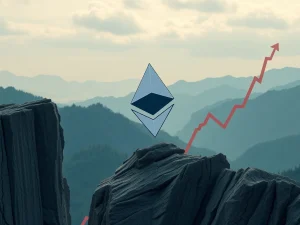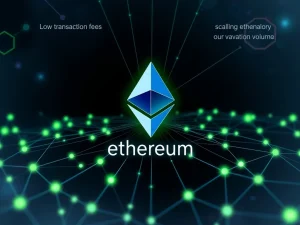Shocking: Institutions Dump Ethereum, But Keep ETH on Watch

The cryptocurrency market is witnessing a significant shift as major players reassess their positions. Specifically, long-time investors are reducing their exposure to Ethereum (ETH). This move comes at a critical juncture for the network, prompting questions about its immediate future and the strategies of large investment firms.
Why Institutions Are Trimming ETH Holdings
Recent blockchain data reveals a trend of institutional investors decreasing their ETH balances. Firms that were once significant holders are now making substantial transfers, often interpreted as moves towards selling.
- Galaxy Digital: Reports indicate Galaxy Digital deposited a large amount of ETH to Binance. While their current holdings are lower than their peak in February, they still maintain a position larger than at the start of the year. This suggests a reduction, not a complete exit.
- Paradigm: Another prominent investor, Paradigm, has also been moving significant amounts of ETH to platforms like Anchorage Digital, which are often intermediaries for institutional trading. Their ETH balance has dramatically decreased over the past few years.
- Fund Outflows: This mirrors a broader trend in Ethereum-based investment products, which have seen considerable outflows recently, though year-to-date flows remain positive.
This cautious stance from Institutions is influenced by several factors impacting the Ethereum network’s performance and economics.
Understanding Ethereum’s Current Challenges
Ethereum is navigating a complex period marked by declining base-layer activity and shifts in its economic model.
- Decreasing Base Layer Usage: Activity on the Ethereum mainnet has dropped, with core metrics nearing multi-year lows. This reduced usage directly impacts the network’s fee revenue.
- Fee Drop and Inflation: Lower network activity means fewer fees collected. Since fees are partially burned (thanks to EIP-1559), less burning leads to increased net inflation for ETH. The supply has now surpassed its level at the time of The Merge.
- Layer-2 Impact: While Layer-2 networks successfully scale Ethereum by handling transactions off-chain, they also capture value (fees) that previously went to the base layer. This cannibalization affects the base layer’s economics.
- Competition from Solana: The rise of competing chains, particularly Solana, has also played a role. Solana gained significant traction during recent market frenzies, showcasing its ability to handle high transaction volumes quickly and cheaply, presenting a viable alternative for certain activities.
Vitalik Buterin Proposes Radical Changes
Adding to the narrative of challenges, Vitalik Buterin, Ethereum’s co-founder, recently proposed a significant architectural change: potentially adopting the RISC-V instruction set. This proposal aims to improve the network’s execution layer speed and efficiency.
Some market observers interpret this proposal as an acknowledgment of the limitations of the current Ethereum Virtual Machine (EVM) architecture. It signals a potential need for fundamental redesign rather than incremental improvements, which can create uncertainty among investors.
Is Ethereum Still on the Hook for Investors?
Despite the institutional selling and network challenges, the story isn’t entirely negative. While some institutions are reducing exposure, others view the price dip as a buying opportunity.
- Whale Accumulation: On-chain data shows some large wallets have been accumulating millions of dollars worth of ETH in recent weeks, suggesting conviction at current price levels.
- Ethereum Foundation’s Focus: The Ethereum Foundation is reportedly shifting its focus, including renewed attention on Layer-1 scaling alongside Layer-2 support, indicating efforts to address base-layer issues.
- Analyst Outlooks: While some banks like Standard Chartered have lowered their high-end price targets for ETH, they still maintain significant year-end targets (e.g., $4,000), suggesting substantial potential upside from current levels for those accumulating now.
Institutions might be ‘breaking up’ with their large, long-term ETH positions in favor of flexibility and exploring alternatives like Solana, but they aren’t necessarily abandoning Ethereum entirely. Many seem to be keeping ETH ‘on the hook,’ ready to re-engage if the network successfully navigates its current challenges and future upgrades.
Conclusion
The current landscape for Ethereum is complex. Institutional selling highlights concerns about base-layer economics, inflation, and competition. Vitalik Buterin’s proposals underscore the technical challenges. However, continued whale accumulation and ongoing development efforts suggest that while institutions are exercising caution and exploring other options, the potential for ETH remains a factor they are unwilling to ignore completely. The coming months will be crucial in determining if Ethereum can regain momentum and address the structural issues impacting its base layer value capture.









